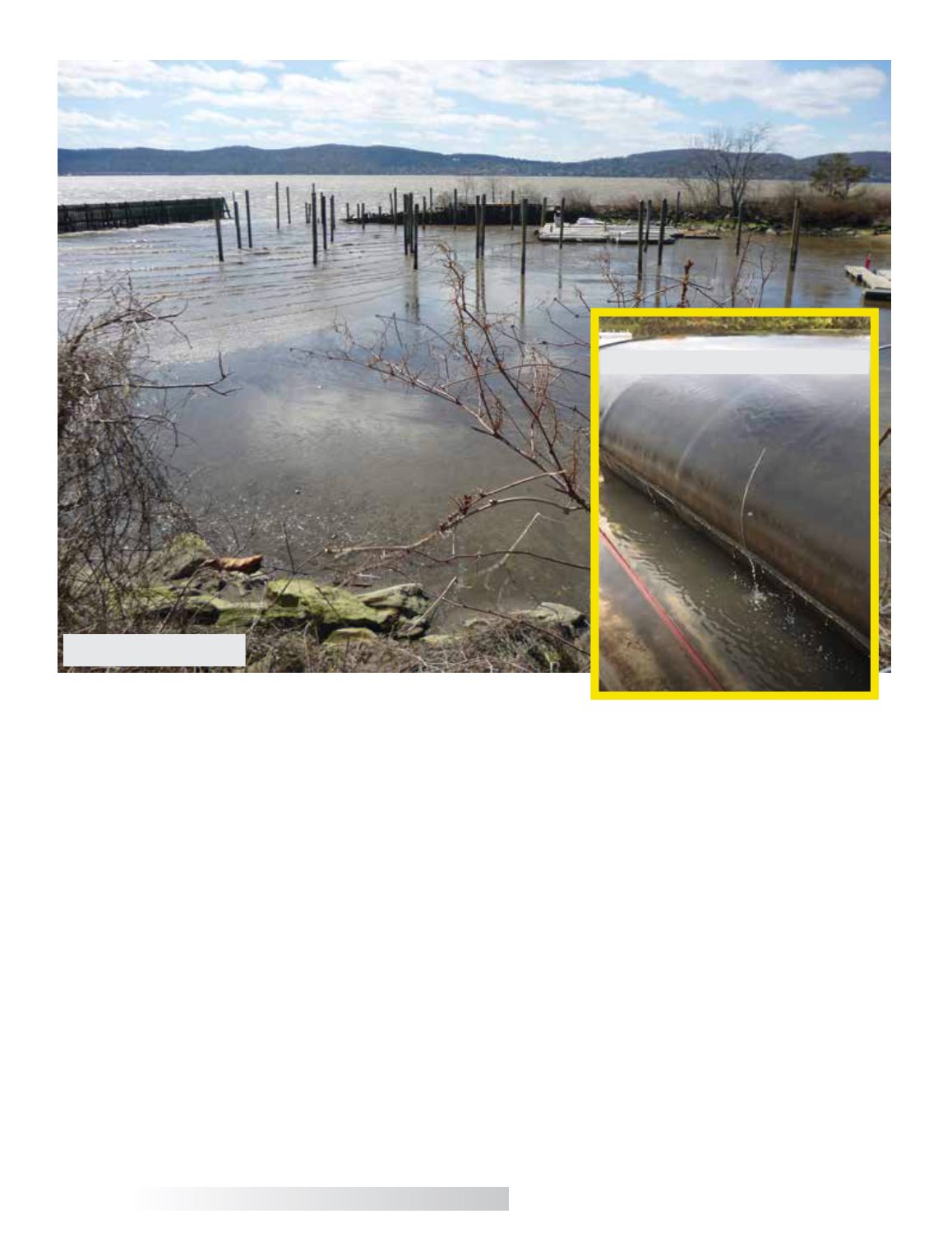

May 2018
37
boatingonthehudson.com
The next step was to obtain the permits from the NYSDEC and the US
Army Corps of Engineers (USACE) to dredge the marina. Part of the review
process by the USACE is to consult with the National Marine Fisheries Service
(MNFS) to make sure that fish and their spawning areas in the Hudson River
are protected during the dredging process.
Preserving existing beds of submerged aquatic vegetation is required to
keep fish populations at healthy levels and can conflict with the need to dredge
to maintain navigable depths in marinas. Because the PMBC marina is one of
the few sheltered areas on the eastern shore of the river that has submerged
aquatic vegetation, the National Marine Fisheries Service was concerned
about the impact of the dredging and the potential loss of essential fish habitat
in the river.
Working closely with the NYSDEC, the NMFS and the USACE, a solution
was found that allowed the dredging to be done while limiting the impact by
harvesting and transplanting the submerged aquatic vegetation out of the
dredge foot print. With the help of three students from the Environmental
Studies Program at Ramapo College of New Jersey, over 300 American Water
Celery plants were harvested by hand and replanted near the shoreline and
will be monitored over the next three years.
With the permits in hand and the approval to beneficially use the dredged
material locally, the beach club was finally able to dredge. The club decided
on using a hydraulic dredge contractor (Legacy Valve, LLC of Valhalla, NY)
whose system allowed the PMBC to avoid the cost of trucking the solids
away from the marina by piping the dredged solids directly to the East
parcel. The cost of hauling the solids can be more than half the cost of a
small to moderate dredge project and piping the dredge solids made this
project affordable.
Approximately 2,300 feet of pipe carried the 7,500 cubic yards of dredged
material to five Geotubes that acted as giant filters to separate the solids from
the water. Geotubes, measuring 200 feet long by 38 feet wide are made of
a geo-synthetic fabric that allows the water to flow out, leaving behind a very
dry, dirt like material at the end of the project. The dewatered sediments will
be mixed with clean soil and used under the improvements that the Village of
Sleepy Hollow Local Development Corporation is making to the East parcel
as the former General Motors property is repurposed. The Village of Sleepy
Hollow was supportive of the dredging and was happy to accept the dredged
material at no cost to the tax payers.
The PMBC dredge project took the club more than ten years from the initial
planning to completion. Once the approvals had been granted, the actual
dredging was conducted in a little over eight weeks from initial mobilization to
completion during this past fall.
While the prospect of dredging can be daunting, with planning, a little
imagination, the right contractors and a good working relationship with the
regulatory agencies it can be accomplished, even for a small marina.
Mr. Judge, a past president of the Philipse Manor Beach Club, is an Adjunct
Professor of Environmental Studies at Ramapo College of New Jersey and
the owner of EcoAssessment, LLC specializing in environmental permitting.
On Site GeoTube Dewatering System.
Low Tide, before dredging..
photos this page: Tim Judge

















